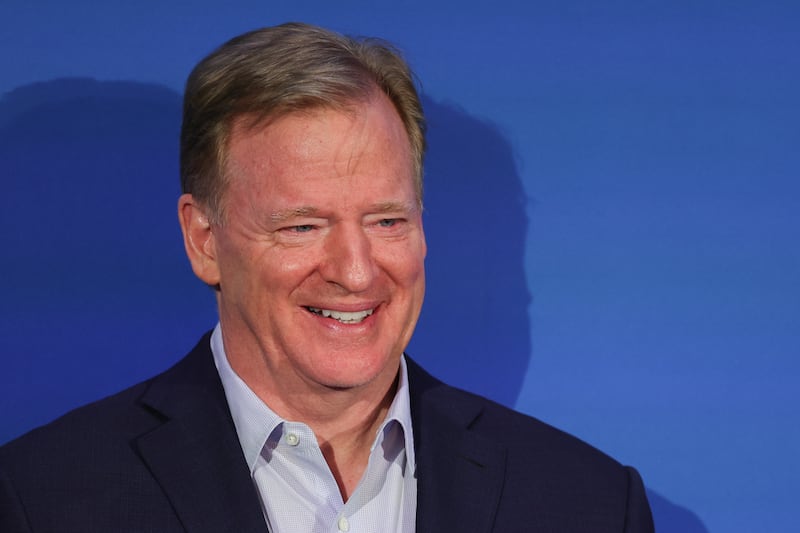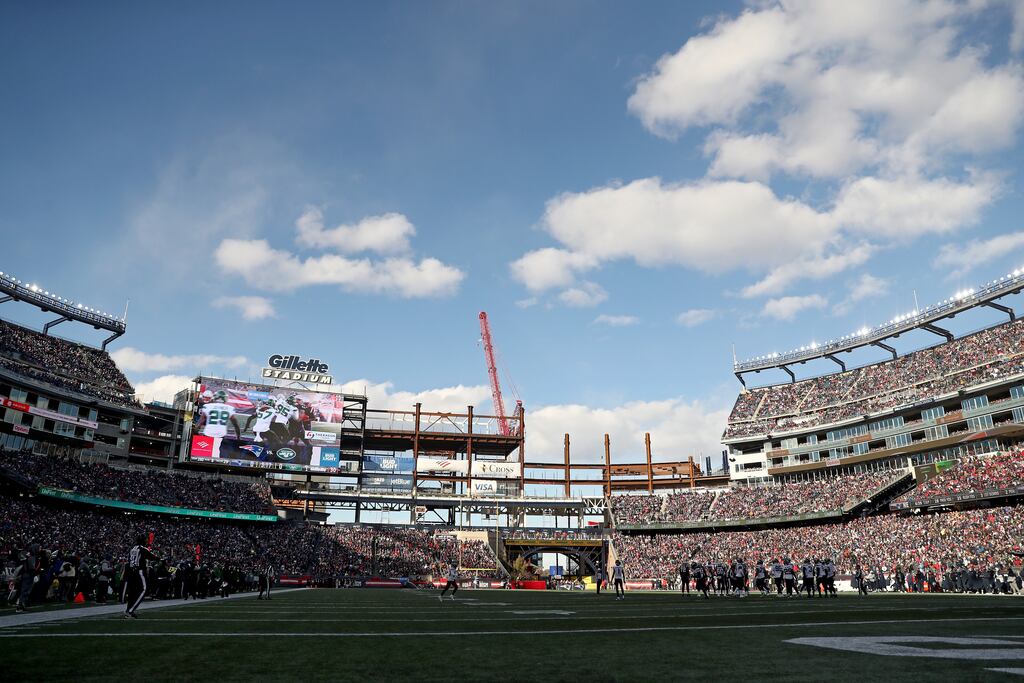On September 17th, Dale Mooney went to watch the New England Patriots, as he had done religiously every home game in the three decades since he first purchased season tickets. During the fourth quarter, a fight broke out in the upper deck of Gillette Stadium, in Foxborough, Massachusetts, and Mooney was punched in the temple by a Miami Dolphins fan with whom he’d been verbally jousting throughout the night. He collapsed to the ground, received emergency treatment in the venue, and was pronounced dead after being rushed to hospital in nearby Attleboro. The 53-year-old is survived by his wife, two kids and a sport where spectator violence is a growing problem.
In the fallout from the incident, authorities have been strangely keen for it to be known that he died because of “a medical event”, not because of the incident, which was captured on video by those sitting nearby – and, which, of course, went viral in the days after. Whatever the exact cause of his death, the fracas involving Mooney highlighted a worrying trend in the NFL, increasing hooliganism that has become a blight upon the league. Every weekend seems to yield a fresh batch of jerky camera phone footage of humanity at its very worst. A random sample of recent fare offers a typical flavour of the tawdry carry-on.
At Levi’s Stadium, Santa Clara, California, two groups of San Francisco 49ers devotees went at it in the aisle. A messy affair, the principals involved were three women and two men. One of the lads grabbed a female fan by the back of the hair, yanked her off the ground then delivered a punch to her face. All while precariously balancing his open can of beer in his other hand. There was oohing and aahing from those in the background, their reactions equal parts shock and exhilaration. Sounding like over-stimulated children at a Christmas panto, none of the bystanders were moved enough to get involved in what was only one of several rolling mauls captured at that match.
The younger of the pair caught hold of the victim before peppering her with wild right hooks. Her stance and delivery betrayed an experienced combatant
The scene from the food concourse fracas at NRG Stadium in Houston, Texas, was of similar vintage. Nearly a dozen Houston Texan fans brawled following their side’s 31-20 loss to the Indianapolis Colts. With no opposing supporters on hand, they kicked and punched lumps out of each other. There appeared to be no rhyme or reason to this conflict, just beery men jumping into battle, styling themselves participants in some WWE tag-team affair, except with real violence. They drew blood even as concession stand workers in the blast zone roared at them to stop and voyeurs held their phones aloft delightedly.
In the same venue where Mooney died, two distaff New England Patriots fans took umbrage with another woman as they passed by her seat. What appeared to be a mother-daughter duo, the younger of the pair caught hold of the victim before peppering her with wild right hooks. Her stance and delivery betrayed an experienced combatant, and, as she went about her work, her older accomplice clambered across so she could simultaneously rain punches down too. Almost everybody in the vicinity of the beat-down just watched, some cheered, more laughed, and a few, inevitably, recorded it for posterity.

When Roger Goodell became commissioner of the NFL in 2006, a job that now pays him $63 million (€59.5 million) a year, he spent time going to watch games from regular seats so he could gauge the true nature of the fan experience. Appalled at the carry-on he witnessed, he declared, “We need to take this from an R (American speak for an over-18 movie) to a PG 13. We want everyone to be able to come to our stadiums and enjoy the entire day.” Within two years, he introduced a fan code of conduct expressly prohibiting drunkenness. A noble intention. A laudable aspiration. Like the United Nations or carbon credits.
The Washington Post discovered that the later in the day a gridiron game kicked off, the more arrests were made at it
The reality is, every NFL game runs on alcohol. Hours before kick-off, cavernous car parks fill up with overloaded pick-up trucks tricked out to serve as party central for bacchanalian tailgates involving banquets of food, rivers of booze and diehard tomfoolery. By the time fans stagger into the arena proper for the game, almost a secondary event to some, many are inebriated. If stadium security refused entry to every drunk fan who rocked up to the gate, as is supposed to be the rule, the stands would be half empty. Once safely inside, the beer flows again, and havoc, inevitably, ensues.
[ Dave Hannigan: The day of the anti-Semitic sons of bitches is upon usOpens in new window ]
“Years of watching NFL gladiators crash into each other to prove their physical superiority have made a generation of fans think they can do the same when they attend a game,” wrote Gary Washburn in a Boston Globe column responding to Dale Mooney’s death. “NFL games aren’t as fun any more. Alcohol consumption has become too much of a priority, which leads to bad decisions and boorish behaviour. It will require a collective effort to stop this trend...”
Seven years ago, Joe Bauer, a 55-year-old Baltimore Ravens fan, suffered a critical brain injury after being punched in the head by a pair of Oakland Raiders supporters. In the aftermath, the Washington Post conducted an in-depth investigation of fan violence nationwide, and, among other things, discovered that the later in the day a gridiron game kicked off, the more arrests were made at it.
The more lead-in drinking time people have, the worse they will behave. The sickness is a lot easier to diagnose than the cure.


















